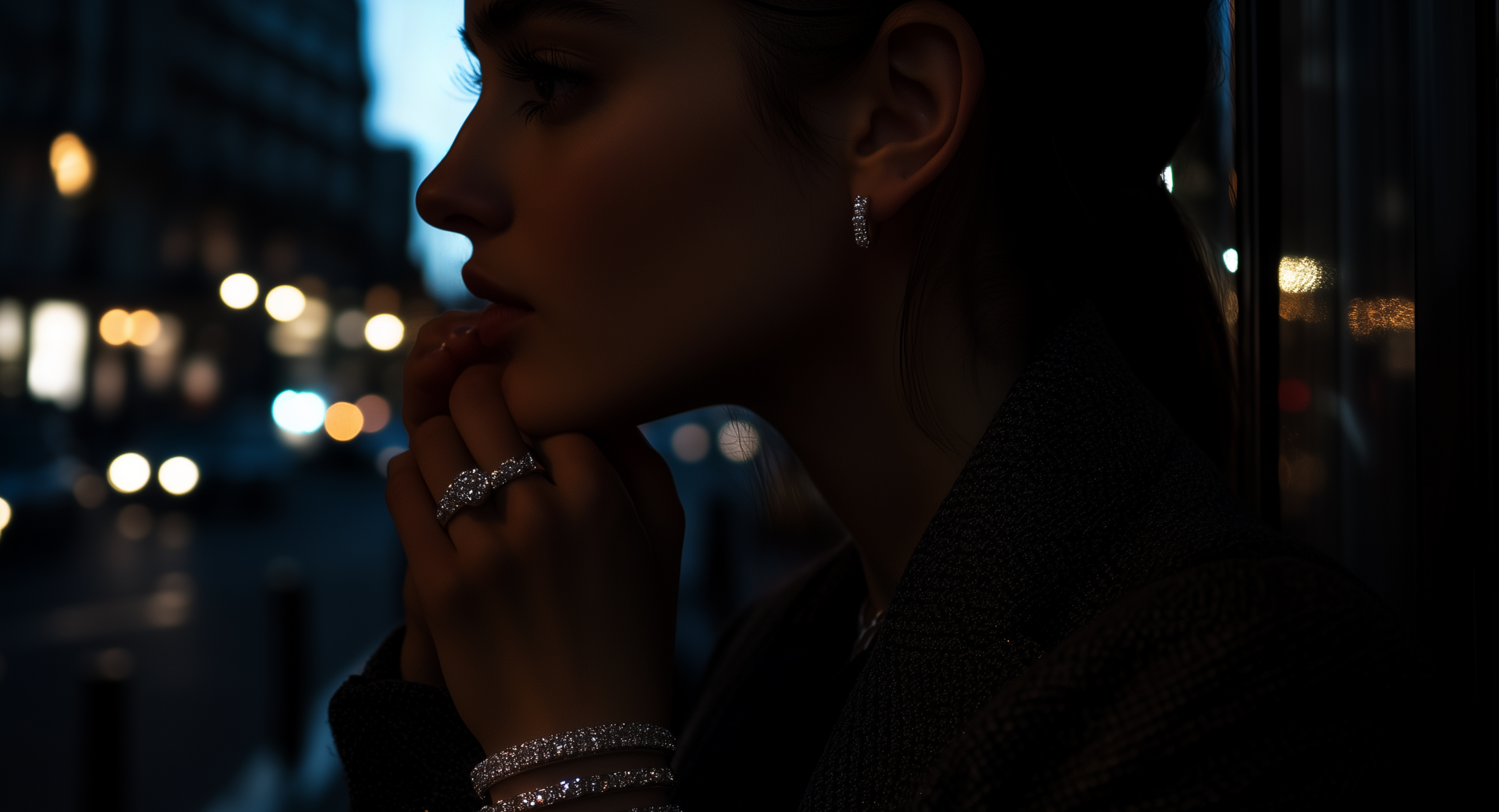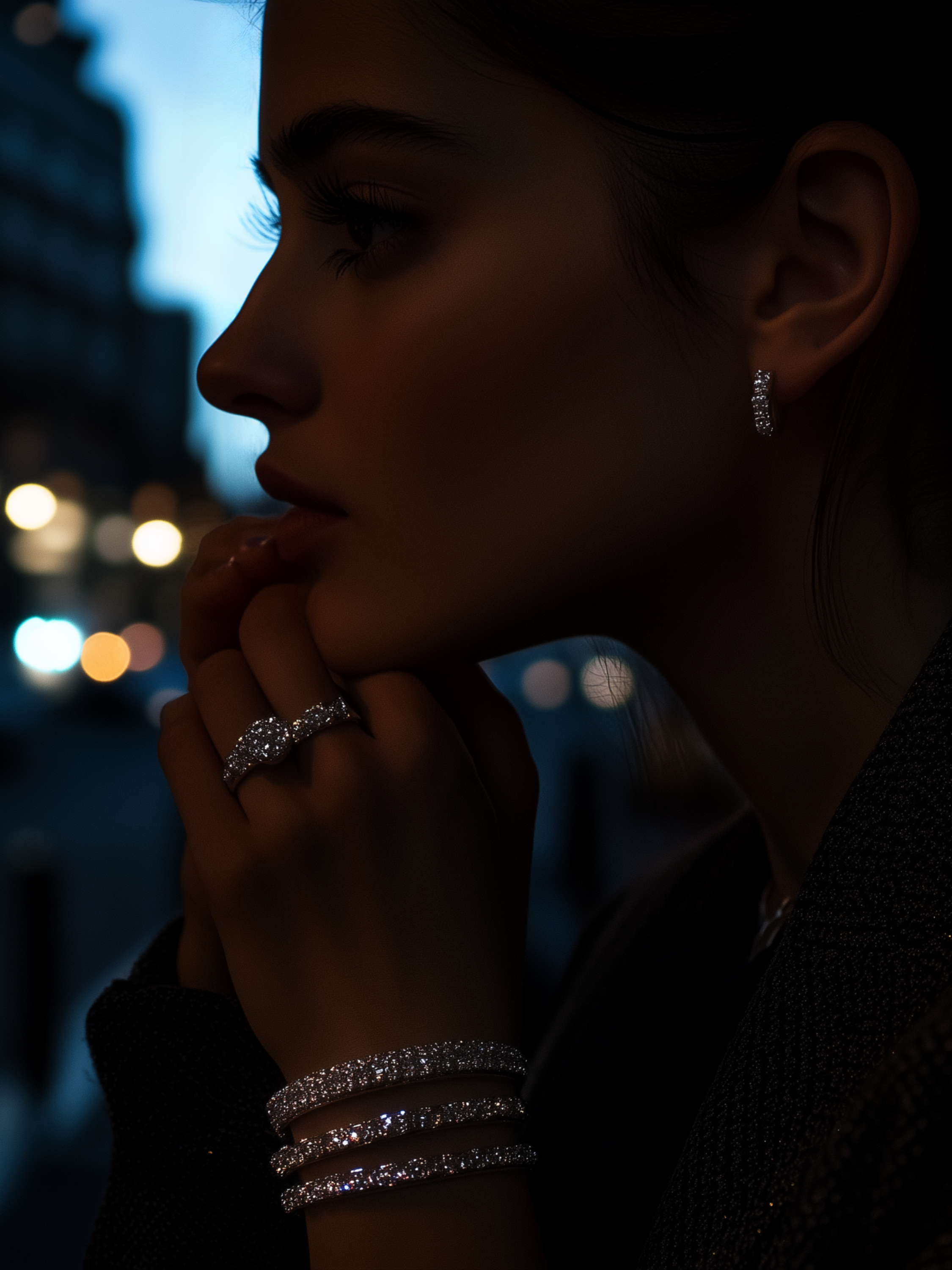How engagement rings have changed over the years and the most popular diamond cuts today!
We can look back to ancient cultures like Rome and Egypt for early innovation
Anthropologists believe the earliest uses of an engagement ring originated from a Roman custom, in which wives wore rings attached to small keys, indicating their husbands' ownership. This practice evolved, as all customs do, until 1477 when Archduke Maximillian of Austria commissioned what is thought to have been the very first diamond engagement ring on record for Mary of Burgundy, who would become his wife.

Now, here we are, over 500 years later, and this engagement ring trend is plenty old enough to have evolved in countless ways – not just from the styles of rings themselves, but to trends changing as well.
Diamonds are still and have long been, the preferred center stone for a diamond engagement ring, and we’ll get to the most popular cuts in just a bit. But more offbeat, unique trends are starting to emerge, such as cocktail rings styles worn as diamond engagement rings – perhaps a cocktail engagement if you will, one with coloured stones featured heavily instead of the prototypical white diamond.
But first, let’s continue to explore some of the earliest recorded engagement rings trends – we move forward from Ancient Rome to ornate Edwardian era engagement rings
America, the land of plenty, right? You might think the US would have an early thirst for huge, diamond rings. Well, Americans wanted them, but only a small part of the population could even afford engagement rings, as opposed to their widespread nature today. Today, more people can afford impressive diamond engagement rings at a fair price, thanks to things like lab-grown diamonds engagement rings. Because they require no mining, grown diamond rings can be priced fairly.

Back to the earlier days of American rings…
Engagement rings arrived in America in the mid 1800s, but stayed relatively uncommon in general even throughout the early to mid 1900s
1901 to 1910 was known as the “Edwardian era,” and those couples who could afford and desired such luxuries indeed preferred a large diamond ring. Jewellers also sought to get as many diamonds on pieces as possible, surrounding the main gemstone for this type of ornate look:

Art Deco and the Flappers emerge
With prohibition setting in by the 1920s, American men and women alike delighted in dressing up and going to speakeasies to drink forbidden liquor. They celebrated this illegal decadence by wearing flashy, artsy jewellery to match. Cocktail rings originated in this era, and with engagement rings, we saw early instances of variety in the colour of gemstones – a trend that would later re-emerge in the present era. Art Deco wasn’t just the fashion in architecture, it even influenced engagement ring design:

After the Depression, the diamond engagement ring is king
After decades of people having to watch their spending, the 1950s saw the diamond engagement ring become highly sought after and highly associated with the terms “wedding ring” and “engagement ring.” Even today, this white-diamond-standard sort of approach to the wedding ring is still probably the most common one to symbolise everlasting love… but one thing that’s changed is where we can get the gemstones for such a ring.

Gone are the days when consumers are forced to endorse mined diamond rings
The trend towards seeking more sustainably sourced products in various marketplaces has now found its way to luxury, and the news of humanity now being able to culture diamonds (also known as lab grown diamonds) just continues to spread. For many, it’s becoming a no-brainer choice to at least consider – after all, why not get a lab gown diamonds engagement ring if it’s the exact same diamond, just as real as a mined diamond, and at such less cost to Earth (not to mention your pocketbook)?

The 1970s see the trend of the bride and groom each wearing wedding bands to take hold
We’ve said a lot so far about bridal rings trends for brides, but what about the groom? Men wore wedding bands before this era, but it wasn’t until the 70s that this trend really took off and became the norm for some time, even continuing today. The bride’s ring was still of course the priority, as it featured far more design choices, gemstone decisions and so on. When it was complete, a matching wedding band for the groom was fashioned after it, usually in simple yellow gold.

1982 – Diana becomes the Princess of Trendsetting
Princess Diana actually picked her ring out of a catalogue! Little did she know, the unconventional-for-the-time wedding piece would be such a game-changer. The ring was a rather large cocktail-style ring (similar in style to the pic just below), which featured a big blue sapphire as its center stone. After a bit of a return to minimalism and tradition in the 90s, Diana's continued influence with her adventurous, interesting twist on an old tradition helped retroactively to signal a comeback in the West for coloured gemstones to make their return to wedding rings.

2010s and onward see coloured stones, different cuts and care for the Earth emerge
The early aughts saw past trends come and go and change for the times, but by far, the most notable change in the last twenty years regarding engagement rings has been now, in the current day! Coloured stones, personal engravings, collaborating with a designer on one’s ideas for a piece - all in vogue now.

But perhaps the biggest change in diamonds engagement rings trends? Probably post-2006, when the movie ‘Blood Diamond’ brought a sobering reality to the forefront of the jewellery-buying public’s minds

It’s not that the public wasn’t aware before, but something about Leo DiCaprio’s natural passion for environmental causes, his utter commitment to roles, and just the stark, dark reality with which conflict diamond trades were portrayed in Blood Diamond… it all added up to a kind of collective, public wake up call to start asking more questions about where their fine jewellery was coming from. 2006, on a side note, was also the year Al Gore’s ‘An Inconvenient Truth’ came out, where the former US vice president introduced the dangers of climate change to a public that was perhaps naive to the dangers our planet was facing.
Blood Diamond showed mining could be a dangerous business

…not just for the planet by harming surrounding environments, but even by endangering people in conflict diamond trades.
Lab grown diamonds were first engineered in the 1950s, but it’s just in the last ten years that gemstone quality cultured diamonds (lab-grown diamonds), which are the very same diamonds as mined ones, really set the market on fire. Engagement rings are the biggest business for fine jewellery brands, and lab-grown diamonds wedding rings have never been in hotter demand, as people seek to be more conscious of the planet.
So, we’ve taken a look at the past, talked about how many options there are now in the current diamond engagement rings market, and how style trends are changing fast as ever. Where does that leave us now, in 2022, as far as what the most popular cut of diamonds is for an engagement ring?
As we mentioned earlier, today is a day when we’re seeing coloured stones make a comeback and more personalised customisation of wedding rings than in recent decades – but a diamond wedding ring is still the most popular choice!
Let’s take a look at the various popular diamond shapes

- Round cut (also known as Brilliant, as pictured on the chart above)
Round cut diamonds are considered the most prestigious diamonds and are the most commonly seen in jewellery. They make up two-thirds of all diamond sales and are always a great choice—guaranteed to turn heads at any event with their maximized brightness and luminosity.
- Princess cut
The princess cut is perhaps the most popular choice for engagement rings. This cut’s most distinctive quality is its square/rectangular shape when viewed from above.
- Emerald cut
Only 3% of the world’s diamonds are emerald cut, but despite the scarcity, they are a popular diamond choice, because the way they’re cut makes them appear larger to the eye. The emerald cut’s shine might be a little less than the round and princess cuts, but the classic and vintage style here is recognized throughout the world of jewellery.
- Asscher cut
The Asscher cut diamond has an emerald-like shape but is more distinctly square. This cut of a diamond is a great reflector of light, improving the brilliance of the stone thanks to its proportions. The presence of colouration on the sides is identical to that of a princess cut diamond, whilst its grade of ‘H’ is highly sought after. The Asscher cut is less pricey than the round and princess but remains a classic choice.
- Oval cut
The extreme brightness of the Oval cut is a notable selling point. This diamond shape is very popular for its perfect symmetry and elegance. This cut, similar to the round, has a large surface and risks showing impurities. Interestingly, on that note, if one were to get a lab grown Oval cut diamond ring, would be no risk of impurity, since man-made diamonds are engineered to always be of incomparable quality.
- Marquise cut
The marquise diamond cut, also known as the football-shaped cut, is not seen much in the engagement ring world, however, this cut features 58 facets and an elliptical shape, which looks fabulous on a ring finger.
- Radiant
The radiant shape has an exquisite rectangular shape, which intensifies and enhances the colours quite “radiantly,” giving this cut of stone its name.
- Heart
This type of cut is similar to that of a bright modified round and is the representation of love and romance. It is a jewel widely used in the world of jewellery for Valentine's Day, Mother's Day and birthday gifts.
- Pear
This style, which perfectly imitates a small drop of water, is classic and elegant. This variant of the round diamond is exceptionally bright.
- Cushion
The cushion-shaped diamond, also called a Mazarin cut, has an elegant and vividly real look. Its shape varies from rounded squares to elongated rectangular, with a classic and romantic appearance.
There you have it! But with so many choices, just what WILL you choose for a ring that will symbolize so much?
Hey, take a deep breath and relax, we’re not trying to freak you out! The answer to this question is actually a relief!
Because there are so many choices and types of wedding rings trending out there, you can choose whatever is right for you! And if being on-trend is something you’re concerned about, there’s never been a safer time than now where there’s a really good chance your ring WILL be hitting on some kind of trend.
But the most important thing is not over-thinking it. Your big day is about you and your partner. Whether you go with a classic solitaire white diamond engagement ring, something personalized with your initials or a reference only you and your partner understand or even coloured stones for a cocktail-style ring… it’s about what it means to you.
And if you’re still unsure, consider consulting a pro who will design a ring with you, taking any ideas you might have to make your dream ring a reality.
Happy hunting!



